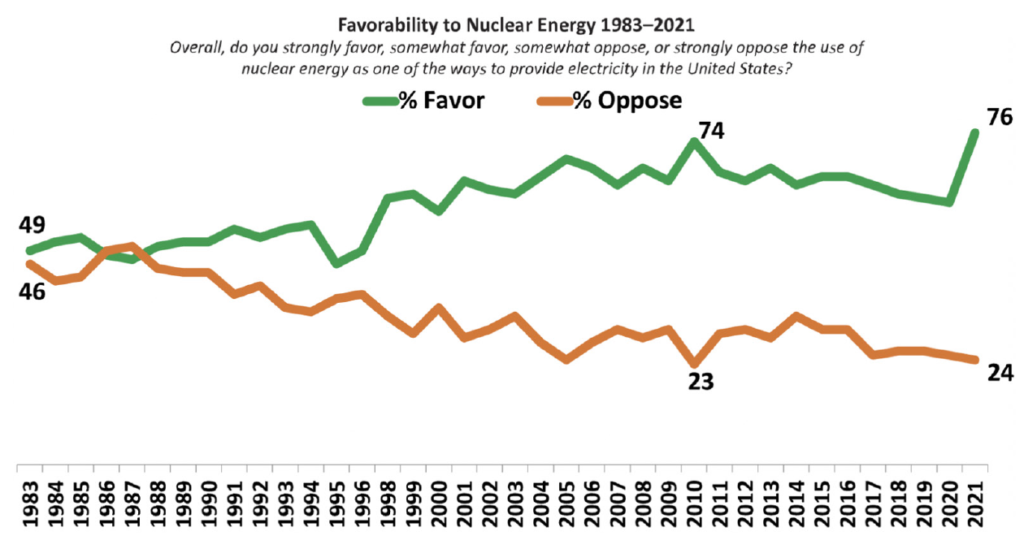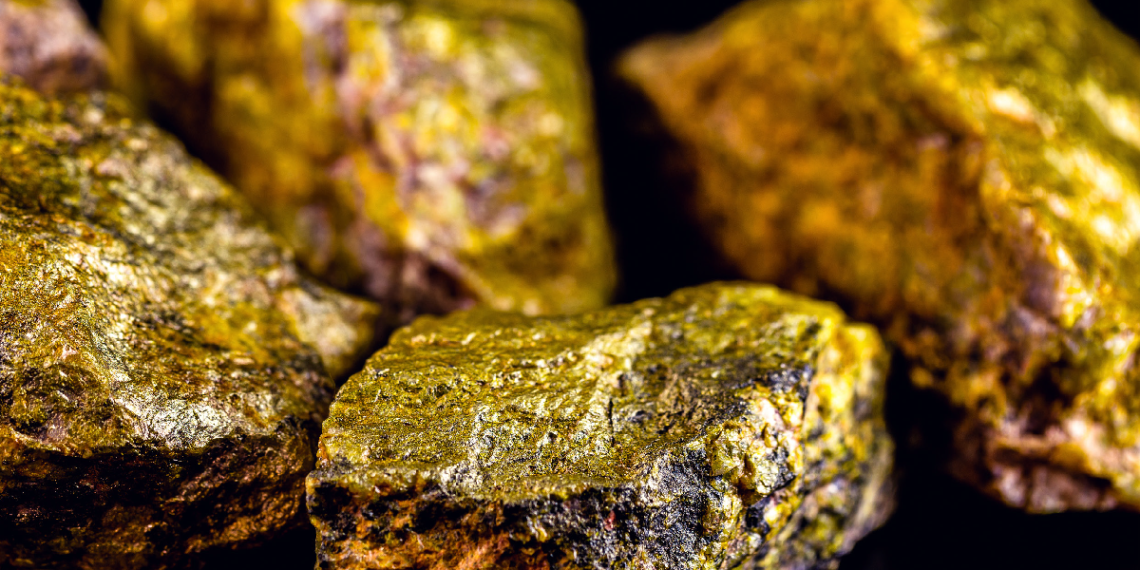A confluence of factors has coalesced and refocused both interest and growth in a longstanding, time-tested technology that produces clean, carbon-free energy: nuclear power. Unlike other commodities, uranium is largely inelastic to economic contractions, and uncorrelated to movements in the U.S. dollar. The climate imperative has added extra momentum due to scarcity of alternatives and further strengthened the case for nuclear energy and its necessary input which has no substitutions: uranium.
Importantly, there has been a noticeable and measurable change in public attitudes towards nuclear power. As is the customary pattern, when government policymakers want to change course, you can expect to see more and more favourable press to surface. That is precisely what has happened as this “orphaned” clean energy source has in some ways been re-introduced to the public as a potential solution to the collective climate challenges. Nowhere has the shift been more noticeable than the views of those on the “left” of the political spectrum, who have been historically opposed to nuclear power. A recent study conducted by ecoAmerica found that American support for nuclear power has grown 10 points from 2018 to 2021. Three years ago, 49% of Americans said they supported nuclear, compared to 59% today…60% of U.S. Democrats now report supporting nuclear energy, compared to 37% in 2018.

In a poll conducted by Bisconti Research, the results were even starker (see chart overleaf). We understand that polling results can vary widely…but one thing is clear – there has been a palpable and profoundly positive change in the attitudes of the general population towards nuclear power. To illustrate how far the pendulum has swung, California – one of the most liberal states in the U.S. – which for years had been steadfast about closing its Diablo Canyon nuclear plant is apparently at the 11th hour having second thoughts.
The uranium market is structurally undersupplied
We anticipate an increased allocation by generalist and natural resource funds combined with possible further aggressive investing in the space from the hedge fund community. Despite providing 10% of the world’s energy needs and ~20% of those in the U.S., the uranium sector still only has a global market cap of sub-US$40B, with a freely-tradable float of perhaps 70% of that (US$28B). That is how we enter the year 2022. Along with the marked change in public sentiment as nuclear becomes increasingly accepted as “green”, the institutional “box checkers” will be happy too.
There are now reports emerging that not all utilities are prepared to wait for the music to stop to secure long-term contracts. Despite the fact that the details of almost all long-term contracts between producers and utilities are shrouded by NDAs, evidence of material price firming is now surfacing. Just this month at an industry conference, Daniel Major, CEO of GoviEx Uranium Inc. (TSXV: GXU) (see profile on p.54) cited a recently-signed long-term contract by an Asian utility that stretched beyond 2030. According to him it was signed with a US$55.00/lb price cap in the first two years, and a US$78.00/lb price cap in the ensuing years. Clearly this is a utility that wants to hedge its exposure to an expected rising uranium price. Not that long ago, long-term contracts were being signed in the US$30s/lb.
In short, the uranium market is structurally undersupplied. Even if the world’s two largest producers, Kazatomprom (LSE: KAP) and Cameco (TSX: CCO), ramp up production, the world will need significant new mine development. The “electrification” of everything and the worldwide push towards electric vehicle (EV) production will put new and unprecedented strains on the power grid. Elon Musk, the most prominent voice on EVs, recently stated that EVs will double the world’s need for electricity by the year 2040, and has endorsed nuclear energy and therefore the uranium bull case. Nuclear power and its irreplaceable commodity, uranium, stands at the centre of both the power generation challenges and the climate challenge. Uranium prices started 2021 at US$30.35/lb and now stand at US$42.75/lb (data as of 21 December 2021). The price of uranium must rise dramatically higher to incentivize badly needed new production. We believe the convergence of all of these factors will lead to a very strong uranium bull cycle in the coming years.











